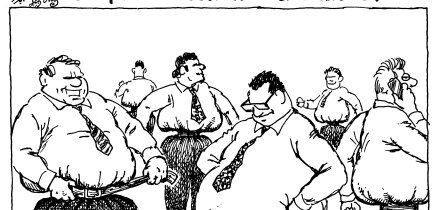A fundamental intuition provided by the Black-Scholes model is the principal of no arbitrage and the use of risk-neutral valuation for pricing derivative instruments. The price of the underlying asset is assumed to follow Geometric Brownian motion with constant volatility. Assuming Geometric Brownian motion for price changes means assuming the distribution of the price itself is lognormal. The lognormal distribution assumption for the price is appealing for several reasons. First, it prohibits the underlying asset from taking a negative price. Second, it keeps the model tractable for obtaining an analytical (i.e. closed-form) solution to a derivative price. Unfortunately, observed market option prices raise questions about the distribution assumptions used for derivative valuation. Specifically, implied option volatility changes with both time to maturity and the level of the strike. If the market behaved according to Black-Scholes assumptions about constant volatility, we would find the same volatility by strike and time to expiry.
The volatility surface for theStandard & Poor's 500 is shown in the graph below.
The volatility chart clearly reveals that the market violates the Black-Scholes assumption of constant volatility. Volatility skews, smirks and smiles refer to the shapes of curves of implied volatilities for different strikes at each option maturity. As the chart shows, the volatility curve usually has more slope at shorter maturities. Volatility skews pose a challenging problem for valuation and risk management. The shape of the volatility term structure and skew varies from market to market and, more importantly, from day to day. From a risk management perspective the floating nature of smiles in the market raises questions. Even a delta-neutral portfolio can incur considerable loss within a short horizon if the volatility smile changes. Market practice has been to price conservatively by demanding a risk premium for writing certain options.
IMPLIED RISK-NEUTRAL FUNCTION FROM MARKET PRICES
Using the Black-Scholes model and a matrix of market option prices with different strikes and maturities, it is possible to calculate not only the implied volatility of each option, but also the implied risk-neutral distribution for the underlying. Implied distributions at each future date give us potentially more information about market views. To extract the implied distribution we need to appropriately model the volatility surface, recognizing that volatility is not constant but varies with strike and maturity. One possible way to model the volatility skew is to assume that the relationship between the implied volatility and the strike level, measured as a percent of the index, defined as moneyness, is a quadratic function.
The coefficients a0(*) = a1(*), a2(*) are estimated to obtain the best fit to the observed skew.
The figure below compares a fitted volatility skew to the actual volatility skew for S&P 500 index options with six months to maturity. The coefficients for the model were estimated to minimize the sum of the squared error terms.
Using the parameterization of the volatility at six months the implied distribution can be calculated and compared to a theoretical lognormal distribution, assume the S&P index level is 1240.
The implied skewness, the symmetry of the distribution, and kurtosis, the hump of the distribution, can be used to position option trades that outperform when a trader's views are correct. Trading the skew refers to speculating that the slope of the implied volatility curve will change and choosing an option position that profits if this happens. Trading kurtosis is not as strange a concept as it appears at first glance. Traders who sell strangles are implicitly taking a view that the market has overestimated the kurtosis of the true probability distribution. An option trader with a contrarian view to the implied distribution above may decide to purchase a straddle or a strangle using S&P index options.
RATIONALE FOR USING VOLATILITY SKEWS AND SMILES
A convincing argument for the existence of the volatility skew is risk aversion on the part of the market. In most markets investors are naturally long the underlying and for hedging purposes tend to be buyers of puts. This means that option traders typically sell puts. This supply-demand mismatch can result in out-of-the-money puts being expensive. In normal market conditions, arbitrageurs will come in to sell the expensive puts and eliminate the mismatch. Put sellers fearing market falls will demand a risk premium leading to persistent volatility skews. The risk premium can be introduced either by modeling the underlying as a jump diffusion process or imposing high transaction costs that force traders to hedge positions discretely.
IMPLICATIONS OF VOLATILITY TERM STRUCTURE, SMILE AND SKEWS
The valuation of derivatives, particularly over-the-counter instruments, must be calibrated to the volatility smile. This can be a challenging problem if volatility smile data is not available. Calibrating option prices to the volatility smile is a complicated interpolation problem. We can fudge model parameters to recover today's market prices and claim to have a calibrated model. But how does the model perform for hedging purposes? A superior model should strengthen risk management. If the model is developed based on empirical observation of the underlying market it will perform better. For example, if underlying prices follow a lognormal process then a model built on this assumption with a reasonably consistent procedure for calibration is acceptable. However, if the empirical behavior of the underlying is more consistent with a square root or Ornstein-Uhlenbeck process, then a lognormal model calibrated to the market will not work. Volatility skews require that we look closely at the calibration method and distribution assumptions behind our models.
This week's Learning Curve was written by P.K. Satishand Thomas Kuntz, managing directors at Market Abilities Unlimitedin New York.





